Chest armour dō
Chest armour dō 胴 of the okegawa 桶側 type, consisting of two parts connected by a side hinge, the metal axle of which can be pulled out so that the two halves can be folded into each other during transport. The chest and back panels are rigidly formed from horizontal lamellae (yokohagi 横矧), with the individual parts not connected by silk bands (which would allow greater mobility in the torso area). Such armour construction was typical of the lowest-ranking light infantry (ashigaru 足軽), who were generally much less well equipped and protected. Attached to the lower edge is a skirt (kusazuri 草摺) made of leather lamellae hanging from silk straps to protect the body below the waist. The leather protectors were also lacquered with urushi 漆 lacquer and reinforced on the inside with a metal insert that prevented twisting. What made the armour slightly more comfortable for the infantrymen was the soft padding (manchira ... more
Chest armour dō 胴 of the okegawa 桶側 type, consisting of two parts connected by a side hinge, the metal axle of which can be pulled out so that the two halves can be folded into each other during transport. The chest and back panels are rigidly formed from horizontal lamellae (yokohagi 横矧), with the individual parts not connected by silk bands (which would allow greater mobility in the torso area). Such armour construction was typical of the lowest-ranking light infantry (ashigaru 足軽), who were generally much less well equipped and protected. Attached to the lower edge is a skirt (kusazuri 草摺) made of leather lamellae hanging from silk straps to protect the body below the waist. The leather protectors were also lacquered with urushi 漆 lacquer and reinforced on the inside with a metal insert that prevented twisting. What made the armour slightly more comfortable for the infantrymen was the soft padding (manchira 満智羅) under the shoulder straps and on the upper back, which is not preserved here; the combination of metal and leather parts also reduced the weight of the armour. On the chest, the heraldic symbol kamon 家紋 of the Hachisuka 蜂須賀氏 clan stands out, a Buddhist swastika in a circle (manji 万字), executed with gilding over black urushi 漆 lacquer. This type of heraldic insignia was affixed to various items of combat equipment as a recognisable sign of affiliation, allowing commanders to visually distinguish and lead individual units on the battlefield. (BŠ)










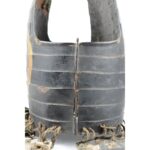








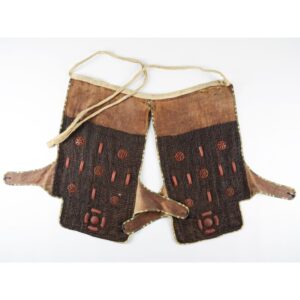



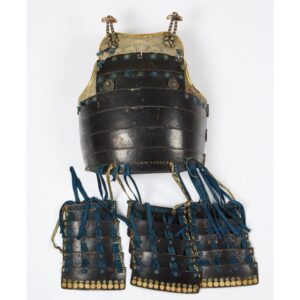





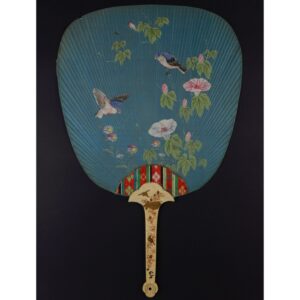





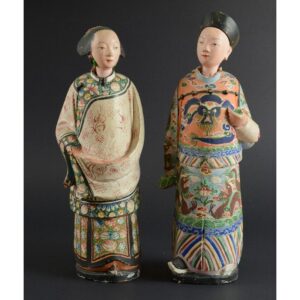








Do you have a comment or additional information about the subject?